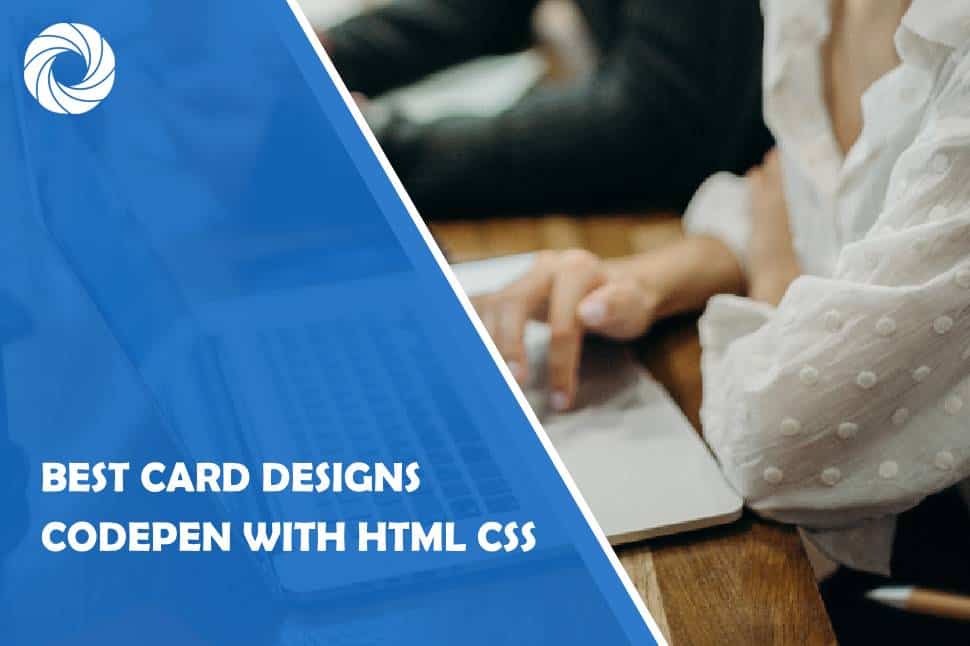In the realm of web development, creating visually appealing and user-friendly interfaces is crucial. Card designs have become a staple for presenting information in a structured and engaging manner. CodePen, a popular online community for front-end developers, showcases a plethora of exemplary card designs implemented with HTML and CSS. In this article, we'll embark on a journey through some of the best card designs on CodePen, highlighting the creativity and skill demonstrated by developers in crafting visually stunning and responsive cards.

1. Card Design Fundamentals
a. Purpose and Flexibility
– Cards serve as versatile components, allowing developers to present various types of content in a structured and visually appealing format. From articles and images to user profiles and product listings, cards provide a flexible and organized layout.
b. Responsive Design
– With the proliferation of different devices and screen sizes, responsive design is paramount. The best card designs on CodePen leverage HTML and CSS to ensure that their layouts gracefully adapt to various screen dimensions.
2. Exploring Best Card Designs on CodePen
a. Material Design Cards
– CodePen is rife with card designs inspired by Google's Material Design principles. These cards often feature subtle shadows, vibrant colors, and smooth transitions, providing a visually pleasing and modern aesthetic.
b. Image-Centric Cards
– Developers frequently showcase their prowess by creating cards that prominently feature images. These designs often incorporate creative hover effects, parallax scrolling, and responsive image resizing.
c. Animated Cards
– Animation adds an extra layer of interactivity to card designs. From subtle hover effects to complex transitions triggered by user interactions, animated cards on CodePen showcase the power of CSS animations to enhance user engagement.
d. Grid Layout Cards
– Grid layouts offer a clean and organized way to present multiple cards. Developers on CodePen often experiment with grid structures, creating visually striking compositions that maintain responsiveness across devices.
3. Key Features of Exceptional Card Designs
a. Accessibility
– The best card designs prioritize accessibility by ensuring that content is presented in a clear and understandable manner. This includes using appropriate color contrasts, legible font sizes, and accessible interactive elements.
b. Usability
– User experience is at the forefront of great card design. Effective navigation, intuitive interactions, and a logical flow of information contribute to the usability of card-based interfaces.
c. Responsive Images
– Responsive images are a hallmark of well-designed cards. CodePen developers often employ techniques like the `object-fit` property and media queries to ensure that images scale appropriately across different devices.
d. Hover Effects
– Hover effects, when tastefully implemented, can add a layer of interactivity and engagement. Whether revealing additional information, transitioning between states, or applying subtle animations, hover effects are a common feature in outstanding card designs.
4. CodePen: A Treasure Trove for Card Design Inspiration
a. Community Collaboration
– CodePen's collaborative environment fosters a rich exchange of ideas among developers. By exploring the card designs shared on CodePen, you gain insights into different coding techniques, responsive strategies, and creative approaches to design challenges.
b. Code Transparency
– One of the unique aspects of CodePen is its transparency. Developers often share not only the end result but also the underlying HTML and CSS code. This openness encourages learning and collaboration within the coding community.
5. How to Implement Card Designs with HTML and CSS
a. HTML Structure
– Start by defining the HTML structure for your card. This may include elements like `<div>` containers for the card itself, headings, paragraphs, and images.
b. CSS Styling
– Apply CSS styling to create the visual aspects of your card. This includes setting dimensions, defining colors, specifying fonts, and adding effects such as shadows or gradients.
c. Responsiveness
– Ensure that your card design is responsive by using media queries to adjust styling based on screen size. This may involve altering font sizes, changing layout structures, or hiding/showing certain elements.
d. Interactivity
– Enhance your card design with interactivity. This can be achieved through CSS hover effects, transitions, or animations. JavaScript can also be integrated for more complex interactive features.
Card designs implemented with HTML and CSS represent a fusion of creativity, functionality, and responsiveness. CodePen serves as a goldmine for designers and developers seeking inspiration and learning opportunities in the realm of card-based interfaces. By exploring the diverse array of card designs on CodePen, one can unravel the techniques, tricks, and best practices employed by the coding community. Whether you're a seasoned developer or a budding enthusiast, the best card designs on CodePen offer a captivating journey into the world of front-end development, encouraging continuous exploration and innovation in web design.
